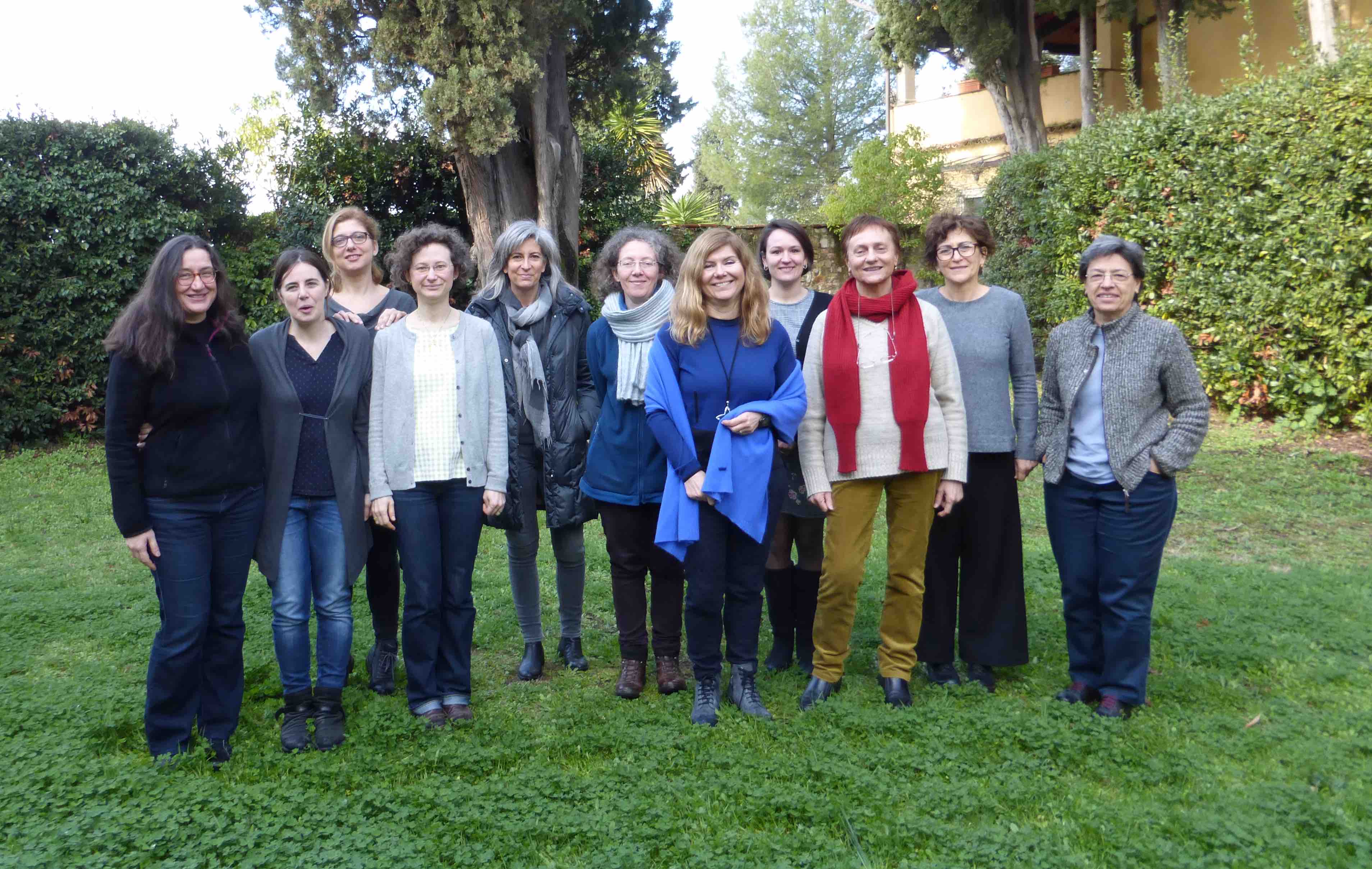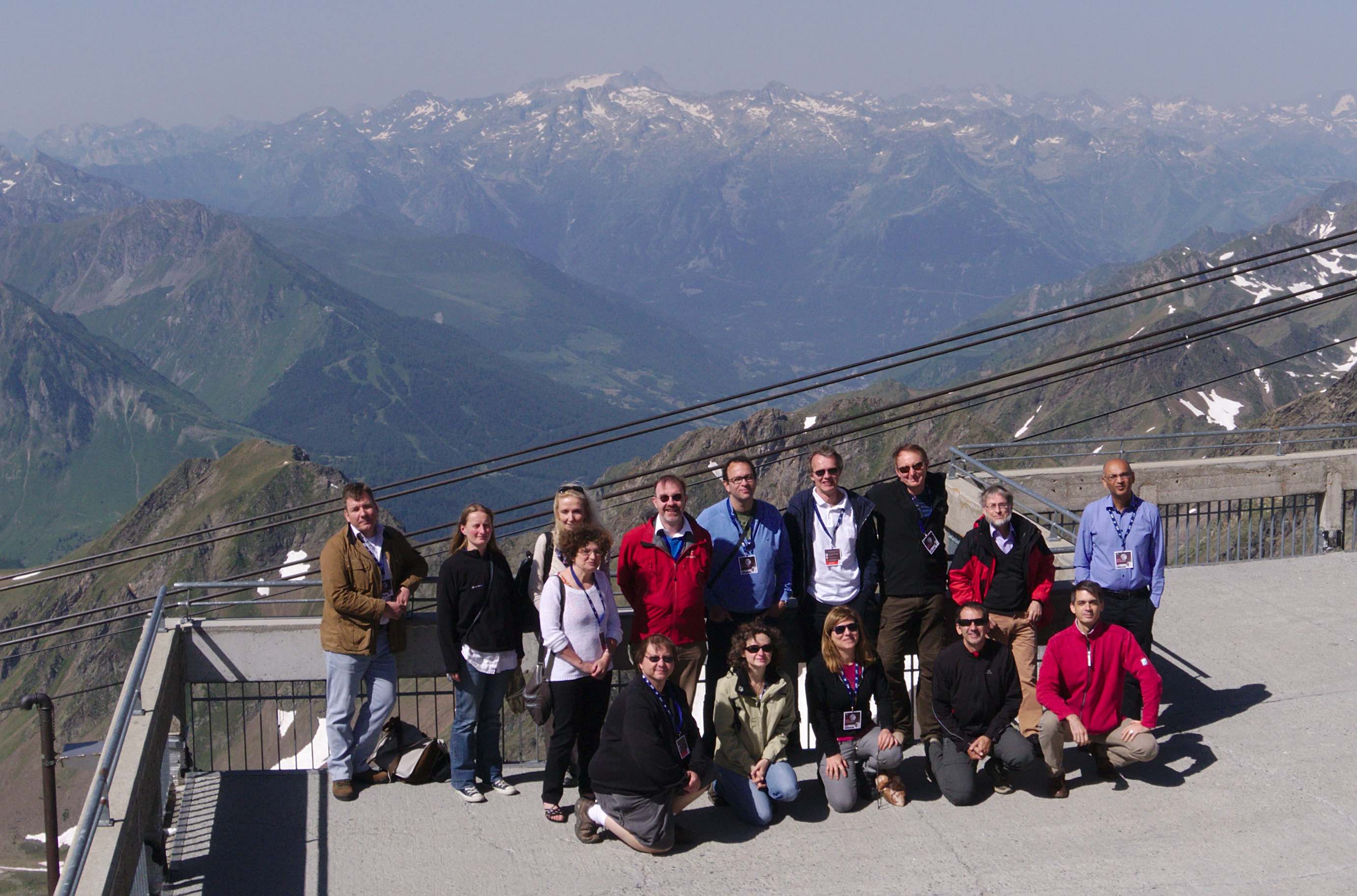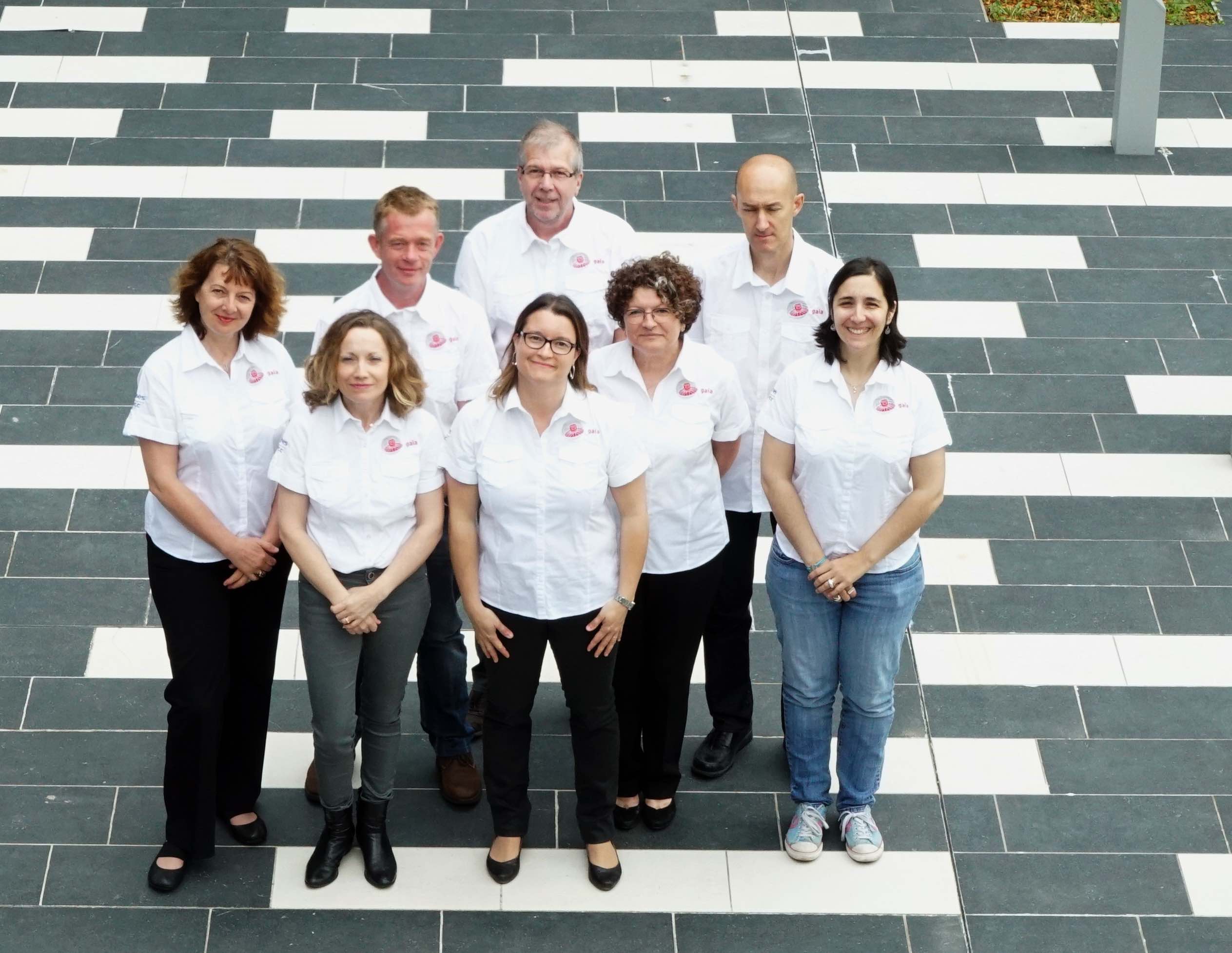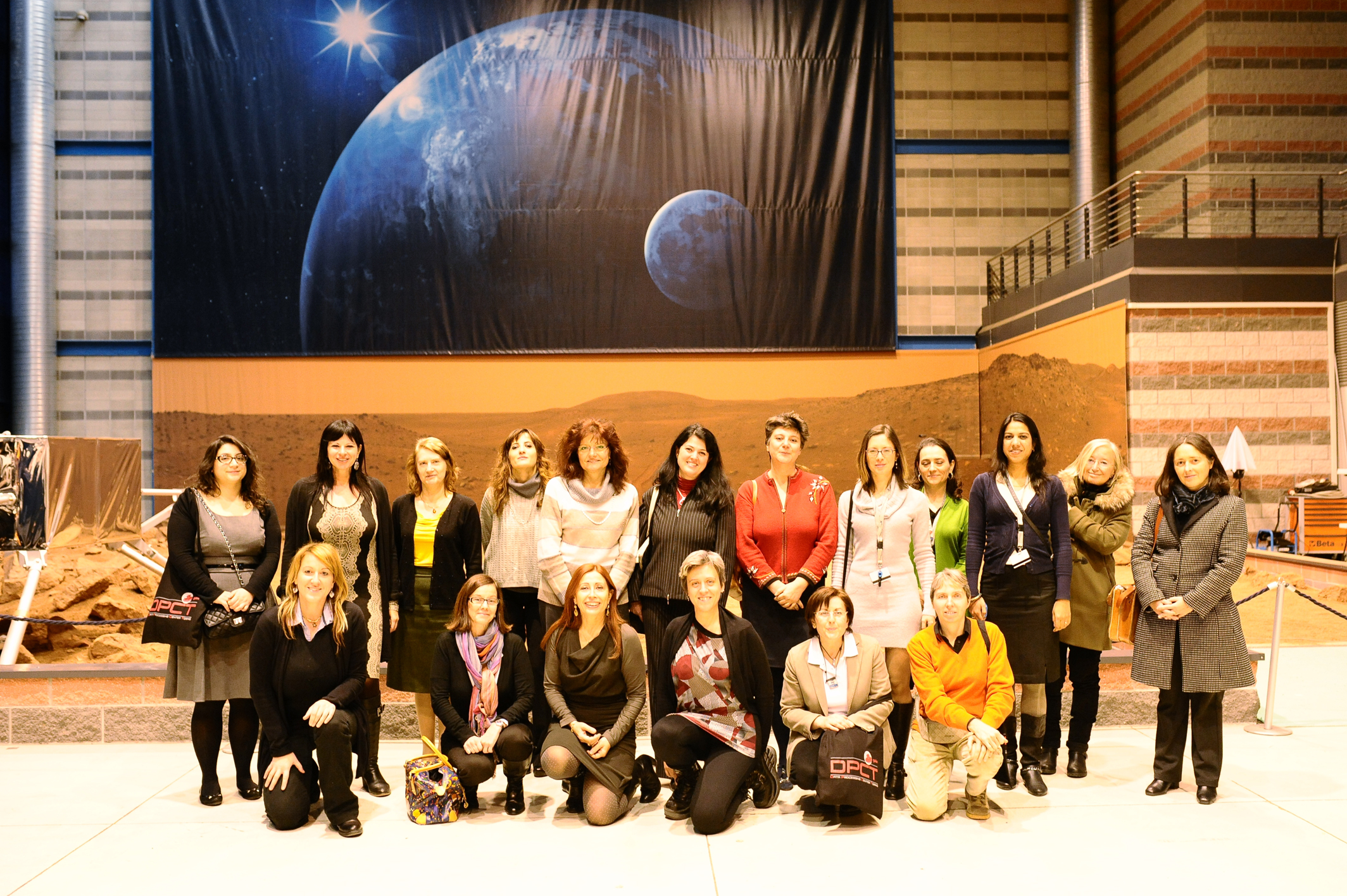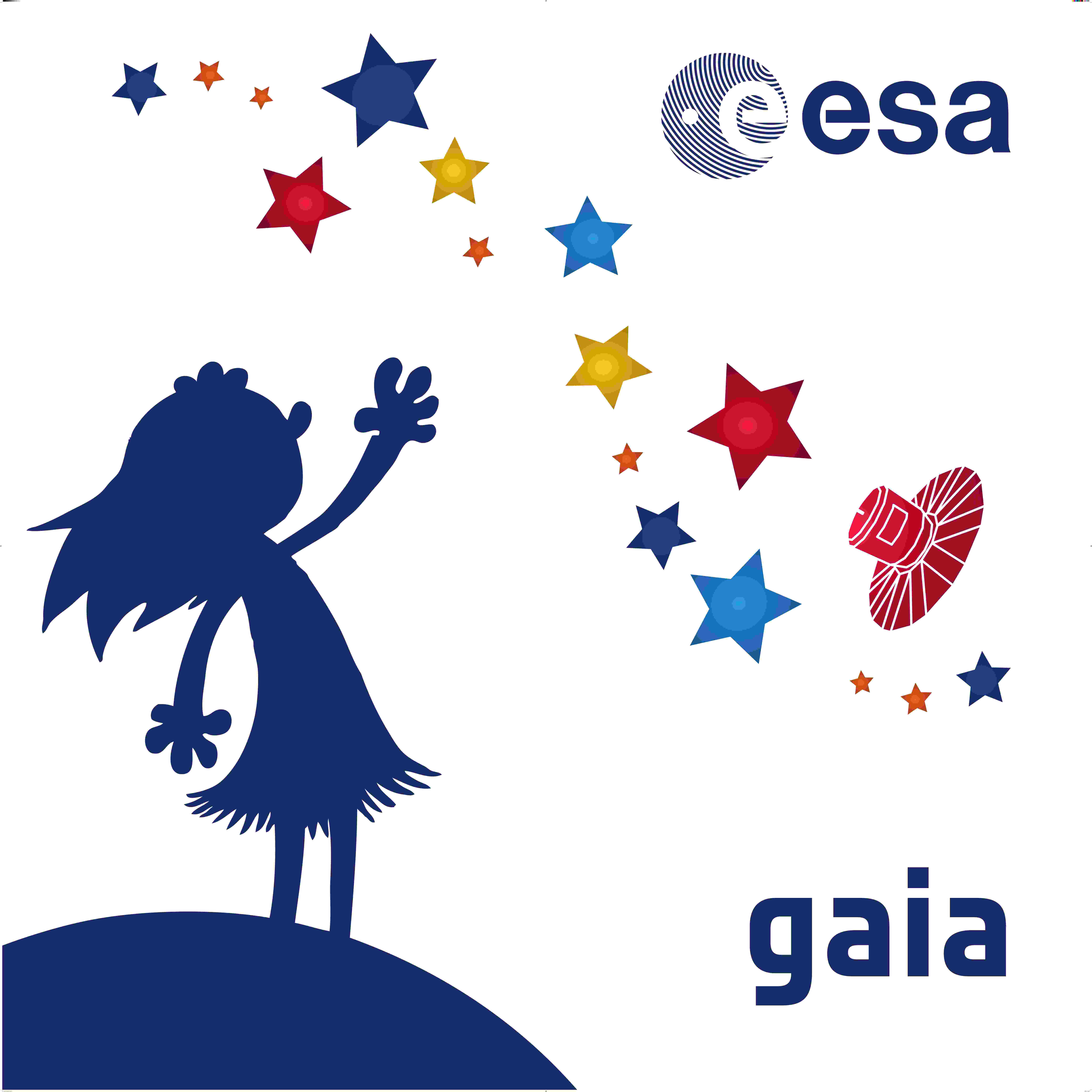IoW_20180211 - Gaia
Image of the Week |
|||||||||||||||||||||||||||||||||||||||||||||||||||
Gaia Women in Science |
|||||||||||||||||||||||||||||||||||||||||||||||||||
|
Gaia women at the Florence CU5 meeting this February. From left to right: Elena Pancino, Nicoletta Sanna, Giorgia Busso, Francesca De Angeli, - , Diana Harrison, Antonella Vallenari, Catrina Diener, Carla Cacciari, Anna Piersimoni, Carme Jordi. (Image credit: ESA/Gaia/DPAC/CU5) |
|||||||||||||||||||||||||||||||||||||||||||||||||||
|
11 February was declared to be International Day of Women and Girls in Science by the United Nations in an effort to achieve full and equal access to and participation in science for women and girls, and to further achieve gender equality and empowerment of women and girls. With Gaia, we too celebrate the International Day of Women and Girls in Science, by dedicating this image of the week to the Gaia Women of Science! Below a short overview of the distribution and participation of women in Gaia and our Data Processing and Analysis Consortium (DPAC) is given. People working for Gaia or DPAC are spread over Europe mainly. The ESA Gaia team is distributed over three ESA locations: ESOC in Germany, ESAC in Spain, and ESTEC in The Netherlands. The Gaia DPAC people are distributed over more than 100 institutes in the world, and the consortium is organised through 9 coordination units and 6 data processing centres lead by the DPAC Executive. When looking at the entire Data Processing and Analysis Consortium consisting of about 450 people, about 25% of them are women. To put things in perspective, the International Astronomical Union membership statistics can be found here. Within the coordination units (CUs), percentage of women ranges between 13% and 36%. For the data processing centres (DPCs) the range is even broader, varying between 8% and 38%. Be aware that these percentages do not take into account the actual FTE per person, or do not account for removing the people being active in multiple CUs. Everyone within a CU or DPC has been counted as working full time within this CU. In 2017 a study on Gender in DPAC was performed in the Gaiaverse framework, which gives a more elaborate view of the distribution of women in DPAC.
Overview of the percentage of women in the different coordination units and data processing centres in the Gaia Data Processing and Analysis Consortium, status of February 2018.
The Gaia DPAC Executive meeting at Pic du Midi. The Gaia women in this image are from left to right: Carine Babusiaux (manager of CU2), Paola Sartoretti (manager of CU6), Veronique Valette (former manager of DPCC), Francesca De Angeli (manager of DPCI) and Antonella Vallenari (DPAC deputy chair) (Image credit: ESA/Gaia/DPAC) The Gaia DPAC Executive oversees DPAC activities and consists of the 9 managers of the Coordination Units and a representative of the CNES Data Processing Centre. 4 out of 12 members of the DPAC Executive are female, being the representative of the CNES data processing centre, the deputy chair of the DPAC Executive and two Coordination Unit Managers. As you can see from the table as well, half of the managers of the Gaia Data Processing Centres are women.
"Being in science allows you to be creative and independent, and look at the future in the making. It is a lot of fun!" - Antonella Vallenari, DPAC Executive deputy Chair.
Gaia CNES team in Toulouse (France), a team with a majority of women. From left to right: Chantal Panem, Anne Jean-Antoine-Piccolo, Gavin Walmsley, Laurence Chaoul, François Riclet, Veronique Valette, Frederic Pailler, Julie Guiraud. (Image credit: Gaia DPCC)
The CNES Data Processing Centre shows an impressive 38% of women. Chantal Panem is in charge of the Gaia Data Processing Centre at CNES as project manager, and as such is a member of DPAC Executive. "Women should join computer engineering and scientific studies, and not leave them to ‘geeks’. They will have very interesting opportunities in many different domains, without sacrificing their personal life and if it’s sometimes more complicated than for men, their merit is much greater." - Chantal Panem, manager of the CNES Data Processing Centre.
4 out of 9 Coordination Units have a percentage of women exceeding the 30%. Also Coordination Unit 6 responsible for the spectroscopic processing and working towards the release of more than 6 million radial velocities with Gaia Data Release 2 have a nice 34% of women represented. This Coordination Unit is lead by Paola Sartoretti. "Be confident on what you are doing, never give up in difficult moments or when other people make you think you can't make it. It is not true, you can." - Paola Sartoretti, manager of CU6
The Gaia Science Team with the DPAC Chair. From left to right: Carme Jordi, Sergei Klioner, Caroline Soubiran, Lennart Lindegren, François Mignard, Sofia Randich, Anthony Brown (DPAC chair), Timo Prusti and Nicholas Walton. (image credit: ESA/Gaia/DPAC).
The Gaia Science Team (GST), which is the science advisory body for the Gaia mission representing the scientific community, meets several times a year to discuss scientific matters arising within the Gaia project. The Gaia Science Team consists of 3 female scientists and 4 male scientists and is complemented with the Project Scientist, who chairs the GST. "Follow curiosity and inspiration, without being afraid and influenced by prejudice." - Sofia Randich, member of the Gaia Science Team.
"Working in science leads to a rich and rewarding life. We need women in the next generation of scientists." - Caroline Soubiran, member of the Gaia Science Team
Gaia women at the Leiden CU7 meeting last November. From left to right: Gisella Clementini, Isabelle Lecoeur-Taibi, Isabella Pagano, Maroussia Roelens, Tineke Roegiers, Elisa Distefano, Leanne Guy, Sara Regibo, Tatiana Muraveva. (Image credit: ESA/Gaia/DPAC/CU7) Gaia women at the Gaia launch event in Turin in 2013: back row, from left to right (numbers in brackets indicate which person): Vilma Icardi (3), Mariateresa Crosta (4), Maria Sarasso (5), Raffaella Buzzi (6), Deborah Busonero (8), Ummi Abbas (10), Paola Re Fiorentin (12); front row: Sofia Randich (2), Barbara Negri (3), Silvia Marinoni (4), Filomena Solitro (5), Beatrice Bucciarelli (6).
Let's hope the science results obtained with Gaia data will inspire many young girls and women to choose a career in science. We hope our Gaia women can give them some extra inspiration.
"Doing science can be a source of fun and emotions, witnessing the Gaia promise to become reality is extremely exciting." - Sofia Randich, member of the Gaia Science Team.
Reaching for the stars... the Gaia fairing logo (Image credit: ESA/Gaia).
|
|||||||||||||||||||||||||||||||||||||||||||||||||||
|
Credits: ESA/Gaia/DPAC, Tineke Roegiers, Chantal Panem, Paola Sartoretti, Sofia Randich, Antonella Vallenari, Carme Jordi, Caroline Soubiran, Francesca De Angeli [Published: 09/02/2018] |
- Removed a total of (80) style text-align:center;
- Removed a total of (13) style text-align:justify;
- Removed a total of (1) align=center.
- Removed a total of (2) border attribute.
- Removed a total of (2) cellpadding attribute.
- Removed a total of (2) cellspacing attribute.
Image of the Week Archive
- Removed a total of (1) border attribute.
- Removed a total of (1) cellpadding attribute.
- Removed a total of (1) cellspacing attribute.








































 Sign in
Sign in
 Science & Technology
Science & Technology
